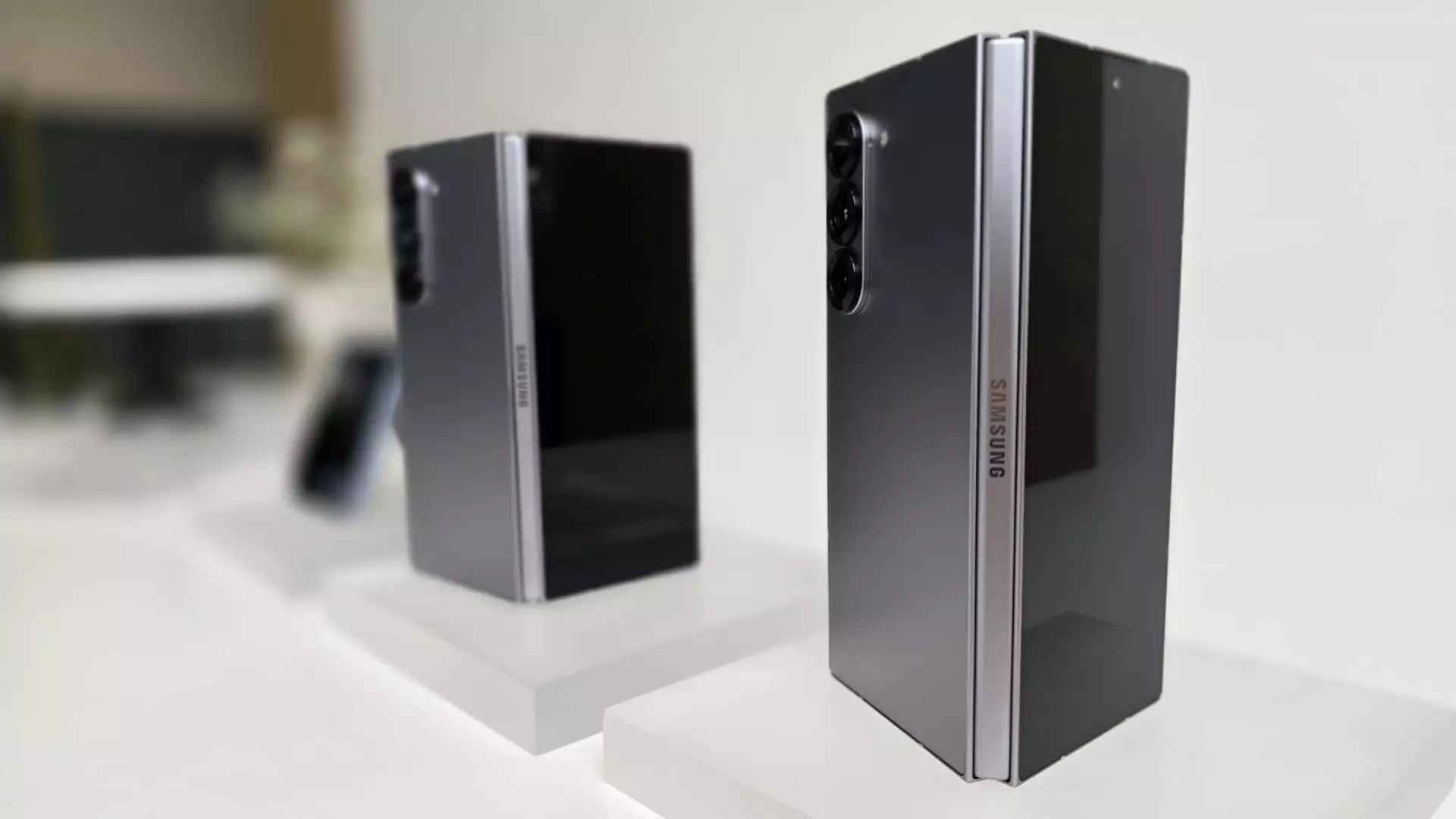Samsung is gearing up to unveil a new, sleeker version of its flagship foldable smartphone, scheduled for launch next month. This announcement arrives against a backdrop of relentless competition from Chinese manufacturers like Honor and Oppo, who are making significant strides in reducing the size and weight of foldable phones. If you think about it, we’re on the precipice of a significant paradigm shift in the smartphone industry. While Samsung pioneered the foldable smartphone market in 2019, it now finds itself at risk of obsolescence if it cannot match its rivals in delivering slimmer and lighter designs. But why is the quest for thinness so critical in the foldable segment?
The answer lies in consumer expectation. Today’s smartphone users are fussy. The advent of slimmer foldables has led to a swift dismissal of thicker variants, regardless of their superior functionality. A foldable smartphone must deliver the promise of compactness without compromising on utility. As Ben Wood from CCS Insight noted, a folding device is only as good as its usability. If a phone folds but feels bulky, consumers will regard it as an inconvenience rather than an innovative solution.
A Comparison of Form Factors
Let’s examine the current landscape of foldable smartphones and how various brands stack up against each other. Samsung’s newest offering from 2024, the Galaxy Z Fold6, measures a bulky 12.1 millimeters thick when closed and weighs 239 grams. In contrast, Honor’s Find N5 is a lean 8.93 millimeters in thickness and weighs just 229 grams. Oppo’s Magic V3 is similarly impressive, being 9.2 millimeters thick and weighing 226 grams. It’s clear that these Chinese competitors have grasped consumer preferences for weight and thickness, and they are effectively using these metrics to differentiate their products from Samsung’s.
The urgency for Samsung to regain its footing in this race cannot be overstated. If it can indeed produce a foldable that approaches the thinness of its rivals, it would mark a welcome design evolution and potentially reinvigorate interest in foldable technology. Otherwise, the South Korean tech giant risks diminishing its market share as consumers flock to lighter alternatives.
The Challenge of Market Adoption
However, it’s not merely a question of thickness; Samsung faces a more profound challenge of consumer adoption. The market for foldables has floundered despite early excitement, with CCS Insight projecting that they will constitute just 2% of the overall smartphone market this year. Yes, thinner models may capture attention, but this can only go so far. There’s a larger question at play: do consumers truly see the value in foldable designs? In many scenarios, it appears not.
Wood strikes a chord with his observation that consumers struggle to justify the need for a folding phone. The innovation must transcend mere aesthetics; it must meet a tangible lifestyle need. Samsung’s upcoming Galaxy Z series could benefit immensely from emphasizing real-world applications that demonstrate how a foldable device fits into everyday life.
The Burden of Perception and Potential
What’s noteworthy, however, is that the current advancements in foldable phones represent a tantalizing opportunity for brands like Samsung. Sleeker models could provoke a reassessment amongst consumers, prompting them to look into foldable devices anew—if the products can reflect utility rather than novelty.
Moreover, the looming presence of Apple adds another layer of complexity and pressure. While Apple remains absent from the foldable game, whispers indicate that an iPhone with folding capabilities may emerge next year. This specter could either serve as a wake-up call for Samsung or signify a dramatic industry-wide shift that could leapfrog existing competitors in the foldable space.
In a technology landscape saturated with sameness, Samsung’s focus on producing a thinner foldable phone is not just a strategic move but a survival imperative. If the tech giant can successfully cater to evolving consumer expectations while competing against nimble rivals, it may yet brighten its future amid an otherwise tumultuous market. But the clock is ticking; technology waits for no one, and complacency is not an option.

